This report explores home and public EV charging behaviours, perceptions and considerations among New Zealand EV owners. It compares the views of battery electric vehicle (BEV) and plug-in hybrid electric vehicle (PHEV) drivers.
About the research
Ensuring accessible and effective charging infrastructure is essential for supporting EV uptake and optimising energy use.
This study is designed to understand the current landscape of EV charging in New Zealand. In particular, it explores in depth:
- home EV charging behaviours and purchase considerations
- public charging behaviours, concerns, and opportunities.
Key findings
Home charging is the most common form of charging.
Home charging is the predominant method for powering EVs in New Zealand, more so among BEV drivers (75%) than PHEV drivers (55%). Public charging remains an important part of the mix for EV drivers, with nearly half (48%) utilising public locations.
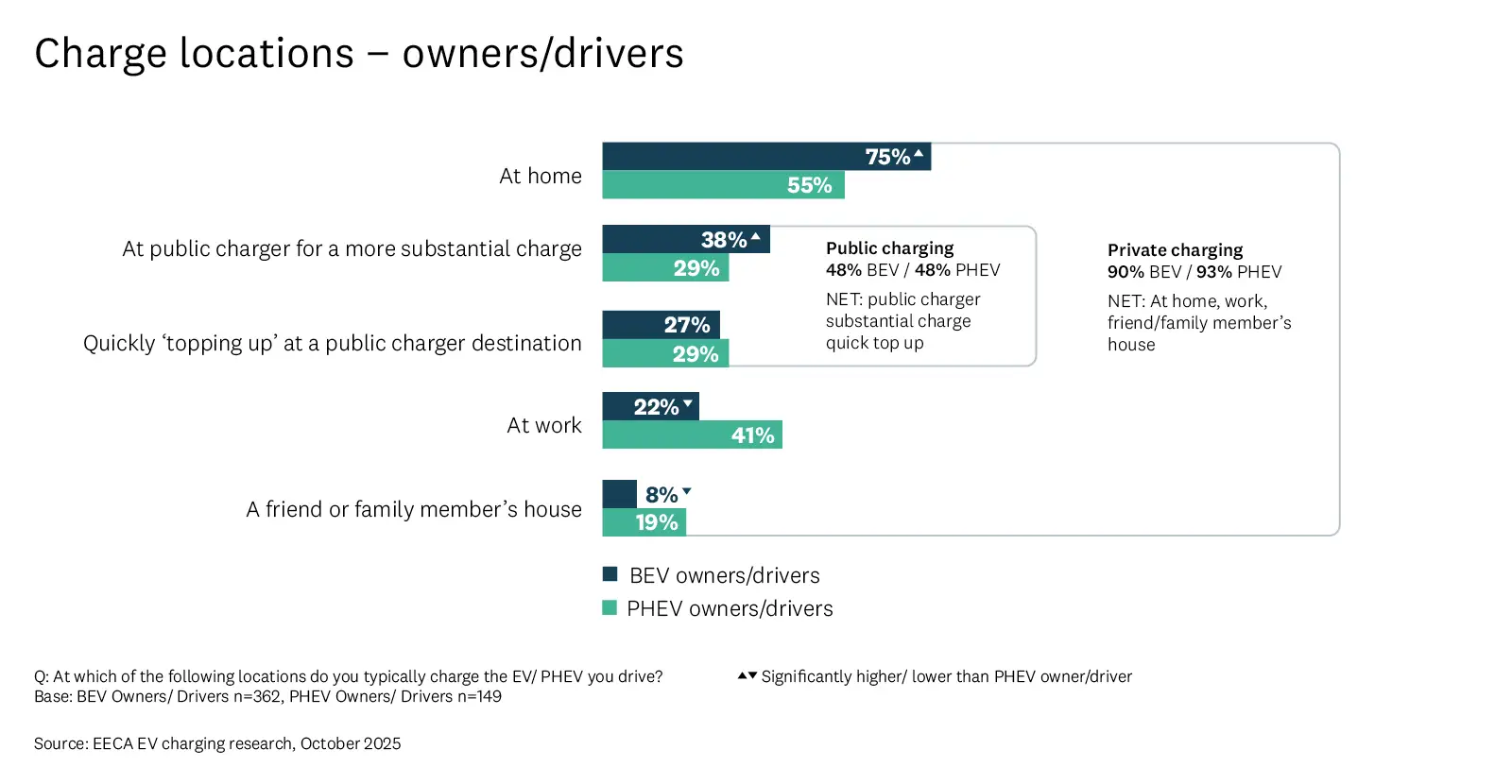
3-pin chargers are still the most popular for home charging.
3-pin plug chargers remain the most widely used option, used by almost three quarters (72%) of PHEV owners/drivers and over half of BEV drivers (57%). There is a small increase in dedicated charger use — up 5% on 2024.
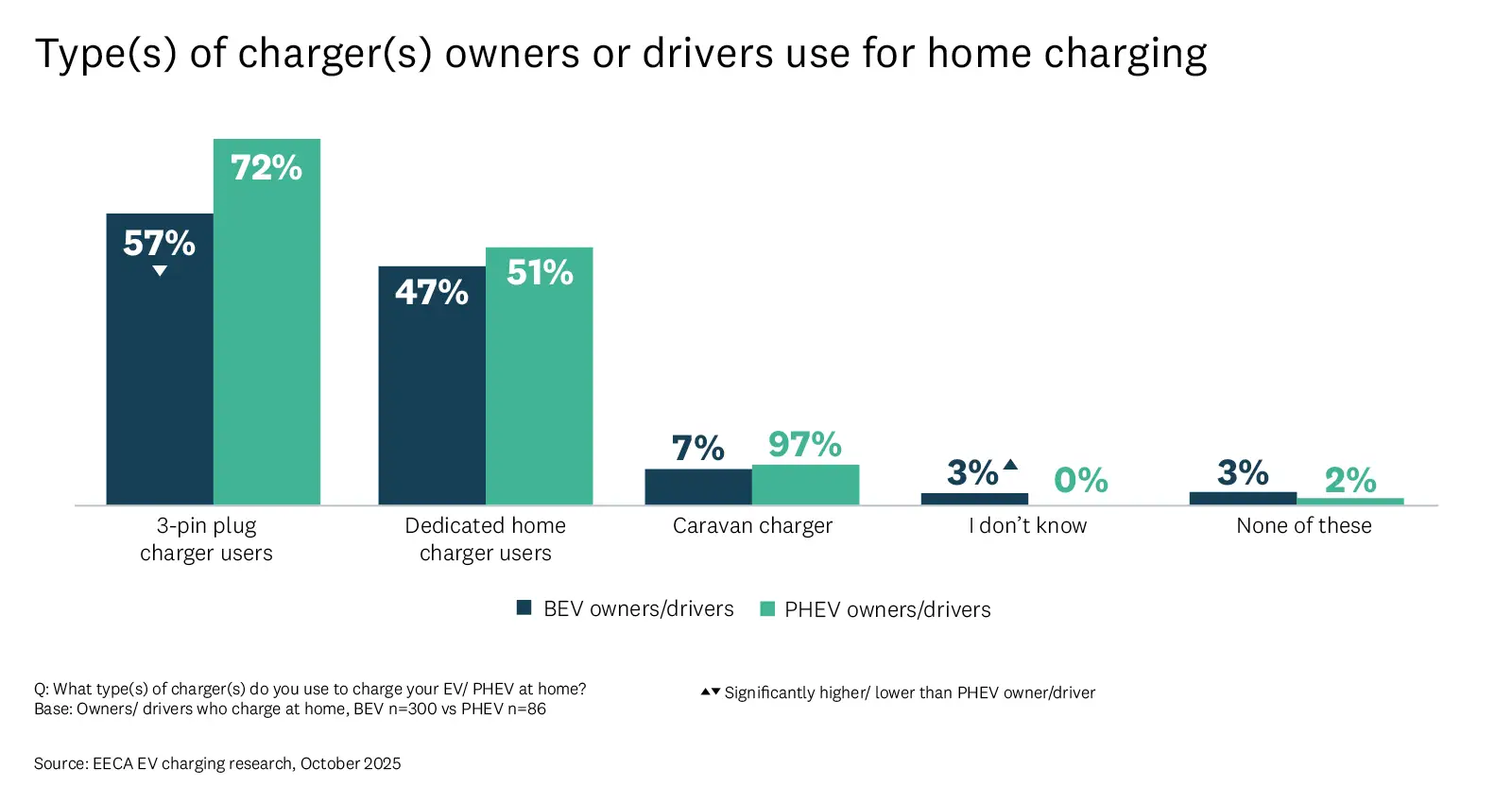
1 in 5 BEV and PHEV drivers are entirely reliant on the public charging network.
These drivers tend to be younger, live in Auckland and are more likely to be renters.
Overall, nearly half (46%) only charge at home, and do not use public charging. BEV drivers are significantly more likely to only charge at home (72%), compared to PHEV drivers (33%).
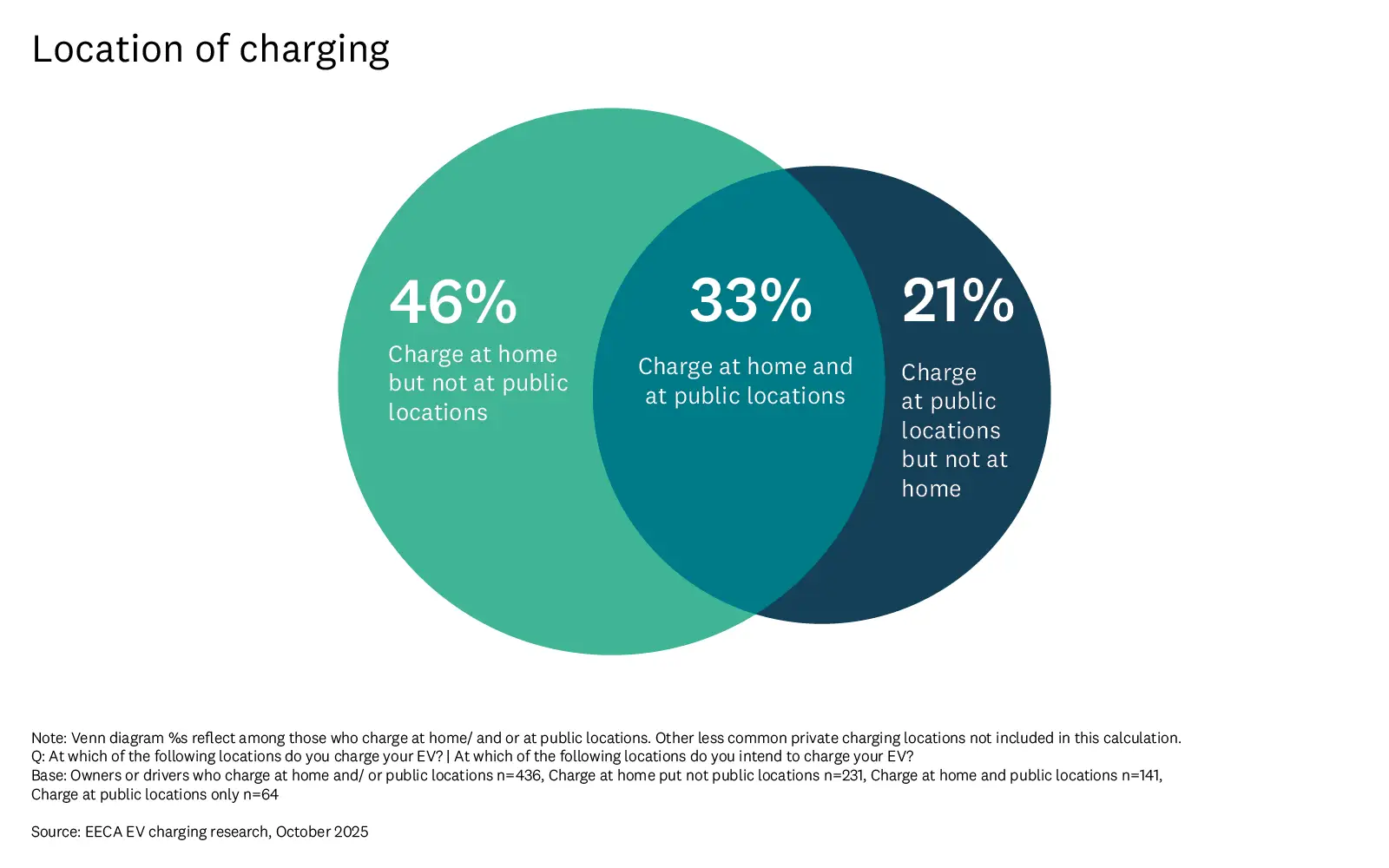
BEV and PHEV drivers report that the biggest barrier to greater use of public chargers is inconvenience due to wait times, limited charging speeds and charger proximity.
Among those that do not use public charging, the greatest barrier is cost (40%). This is similar for drivers of BEVs, 41% of whom also see cost as the greatest barrier.
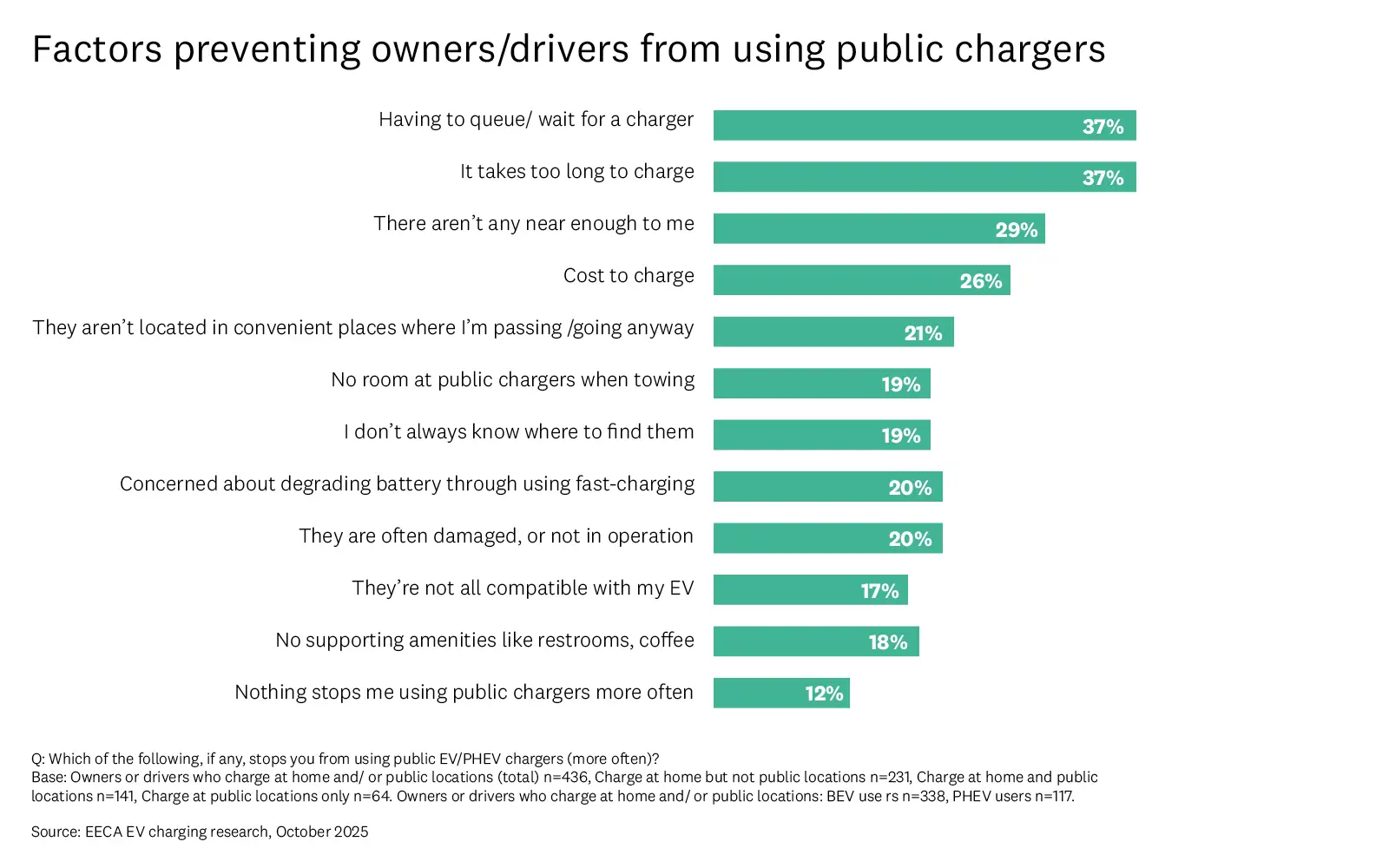
Overall, perceptions of the public charging network are relatively positive.
The perceived strengths of the charging network are different for those who only use public chargers and those who also charge at home. Over three quarters (77%) of those that only charge publicly report the wait times to be reasonable. A similar number of these drivers (76%) also view public chargers to be well maintained and operational, and good value for money (73%).
Key criticisms lie in the distribution of chargers across New Zealand, with just over half (52%) of BEV and PHEV drivers agreeing that there is a good distribution; and the quantity of chargers across New Zealand, with less than half (47%) agreeing there are enough.
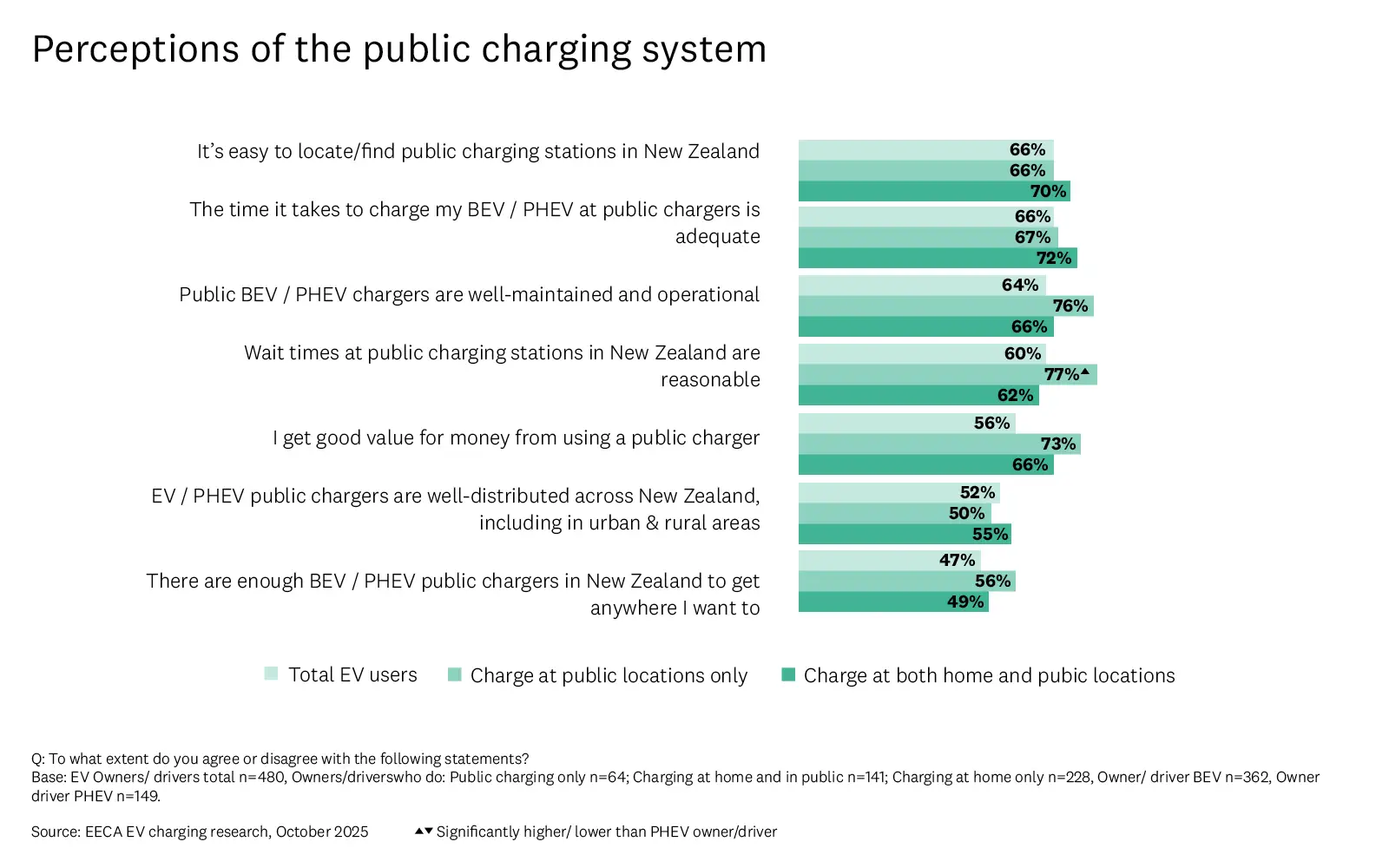
Costs and speed are key to improving the experience of public charging network users.
The top 3 improvements for public charging in New Zealand sought by EV and PHEV drivers are cheaper, faster, and better facilities nearby. Regionally, EV drivers from Auckland in particular desired cheaper charging (62%), drivers in Canterbury desired faster charging (80%) and those in the lower North Island, better facilities (84%).
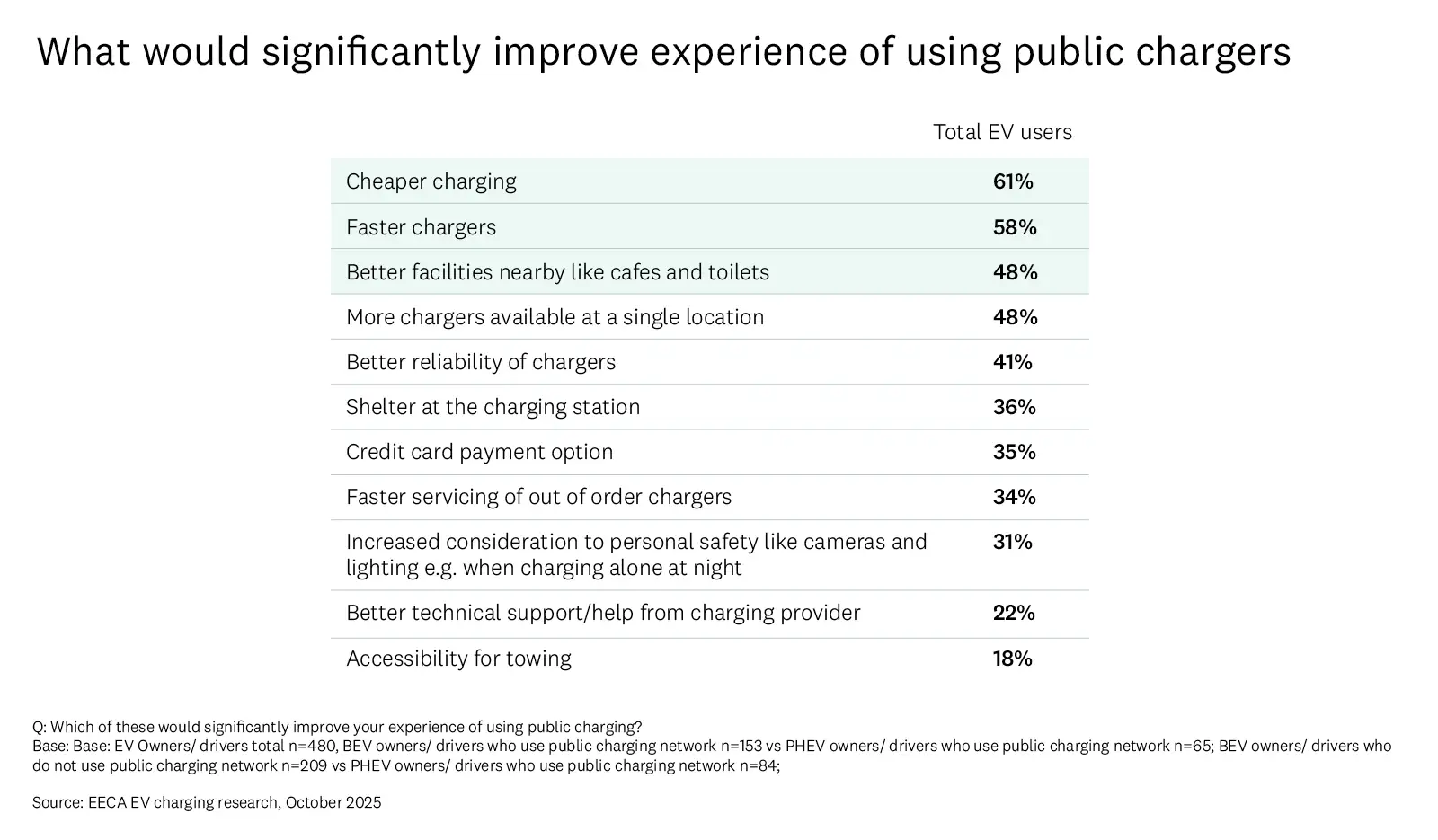
Download previous reports
Read more
-
How we move: Transport use and attitudes
See the results from our consumer survey — March to June 2024.
- Electric vehicles
- Market research
-
Plugging into the future: How New Zealand is electrifying its roads
An overview of public EV charging infrastructure in New Zealand.
- Electric vehicles
- EV charging
-
Knowledge and awareness of residential smart EV chargers
Consideration of smart chargers among EV owners and considerers.
- Smart charging
- EV charging
- Market research


